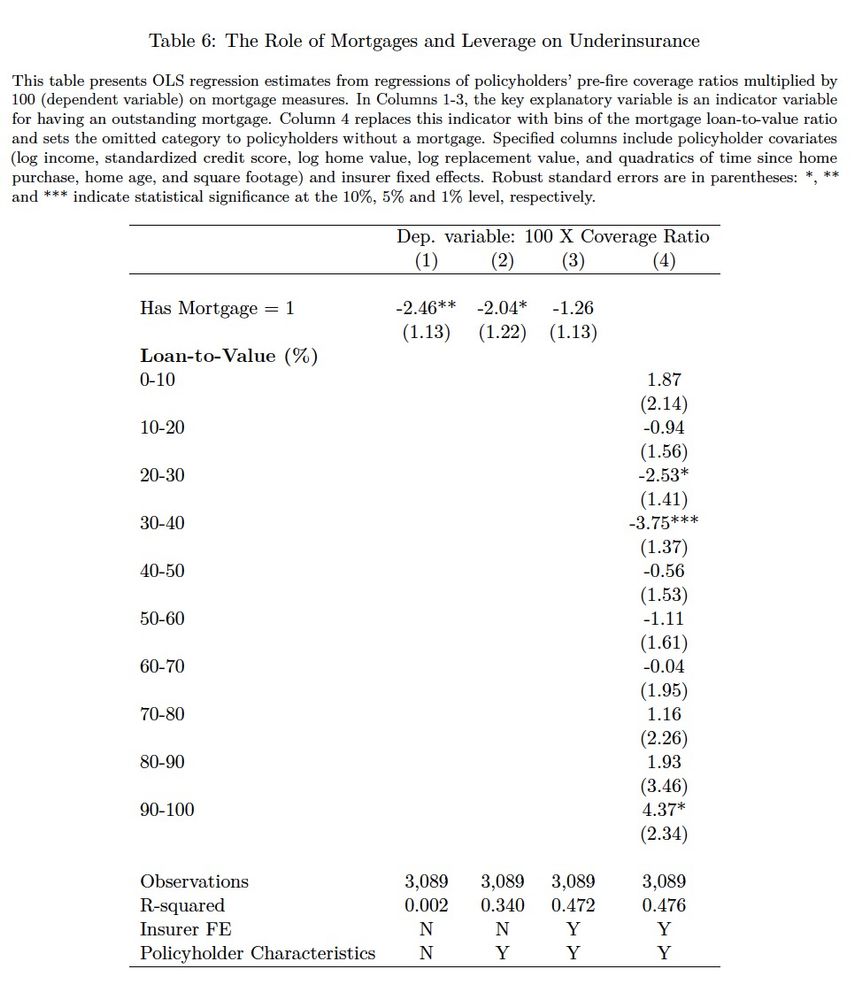
youtu.be/dQw4w9WgXcQ?...

youtu.be/dQw4w9WgXcQ?...
Link (again): papers.ssrn.com/sol3/papers....
Again, this is our first release of the paper, so we're eager to improve it. If you have thoughts or comments, we're eager to learn from you.
Link (again): papers.ssrn.com/sol3/papers....
Again, this is our first release of the paper, so we're eager to improve it. If you have thoughts or comments, we're eager to learn from you.
We estimate this would improve welfare by $290, on average, per year (or about 10% of annual premiums).

We estimate this would improve welfare by $290, on average, per year (or about 10% of annual premiums).
1) it is tough to know what total loss limit is "full" coverage (rebuild cost isn't home price).
2) even with dueling insurance quotes, it is tough to compare policies w different total loss limits.
We think information provision could help.

1) it is tough to know what total loss limit is "full" coverage (rebuild cost isn't home price).
2) even with dueling insurance quotes, it is tough to compare policies w different total loss limits.
We think information provision could help.
* Consumers respond significantly to lower headline premiums in their insurance choice.
* They are less responsive (and in the opposite direction) to the $/coverage price schedule.

* Consumers respond significantly to lower headline premiums in their insurance choice.
* They are less responsive (and in the opposite direction) to the $/coverage price schedule.
The idea is that a rational consumer would compare cost per coverage, but a coverage neglected one would only respond to headline premium.

The idea is that a rational consumer would compare cost per coverage, but a coverage neglected one would only respond to headline premium.
Yes! For about 1000 total losses, we find that being more underinsured makes it less likely the household rebuilds and more likely they sell.
Here, we're instrumenting for coverage choice using insurer average coverage ratio (leave one out).


Yes! For about 1000 total losses, we find that being more underinsured makes it less likely the household rebuilds and more likely they sell.
Here, we're instrumenting for coverage choice using insurer average coverage ratio (leave one out).
Homeowners do not buy more coverage for such houses.

Homeowners do not buy more coverage for such houses.

We can see this because we observe contracts at inception and as of the date of the Marshall Fire (Dec 31, 2021).


We can see this because we observe contracts at inception and as of the date of the Marshall Fire (Dec 31, 2021).
The flip of this? Underinsured households could have gone with an insurer who would have provided fuller insurance.


The flip of this? Underinsured households could have gone with an insurer who would have provided fuller insurance.
High income folks are better insured. There's also a negative correlation to home values, but still most groups are underinsured.



High income folks are better insured. There's also a negative correlation to home values, but still most groups are underinsured.
Finding 1: Underinsurance is *severe and common*... 75% of households are underinsured, and 37% are what we call *severely underinsured* -- i.e., only insured for 75% or less of their home's rebuild cost.

Finding 1: Underinsurance is *severe and common*... 75% of households are underinsured, and 37% are what we call *severely underinsured* -- i.e., only insured for 75% or less of their home's rebuild cost.
1) measure extent of underinsurance,
2) understand how underinsurance ~ insurers versus household characteristics,
3) evaluate impact of underinsurance on recovery
1) measure extent of underinsurance,
2) understand how underinsurance ~ insurers versus household characteristics,
3) evaluate impact of underinsurance on recovery
Because of that wildfire, we also have accurate rebuild cost estimates.


Because of that wildfire, we also have accurate rebuild cost estimates.


